Media | Articles
The Shop That Built This One-Off T-Bird Saved It from Certain Death
Meet the 1963 Thunderbird Italien, a custom-bodied show car. Its recent sale racked up a figure high enough for the record books: $456,000 including fees, over 600 percent higher than the value of a 1963 Thunderbird in #1 (Concours) condition. The unique design is one thing, but the reason for its existence is even more remarkable: The coachbuilding company that made the car also saved it from certain death.
First, a little about the car itself. According to RM Sotheby’s well-researched auction description, the Thunderbird Italien was a one-off byproduct of Henry Ford II’s interest in all things Italian. His fascination reportedly stemmed from a well-known failure to purchase Ferrari in 1963, and a courtship with an Italian socialite who became his wife in 1965. The description also makes the valid connection between the T-bird and Ford’s Total Performance advertising campaign, which initially focused on motorsports but quickly pivoted into the promotion of the advanced design, luxury, and durability of cars like the 1965 Ford Galaxie. Ford’s Total Performance was a great way to give an increasingly diverse market anything it needed in an automobile.
Enter the Thunderbird Italien: a custom-bodied hardtop coupe based on a 1962 Thunderbird convertible, bearing a name that’s a bit more, ahem, continental than the traditional American spelling. The car was made by Dearborn Steel Tubing (DST), the folks behind Ford’s famous Thunderbolt drag racing machines.
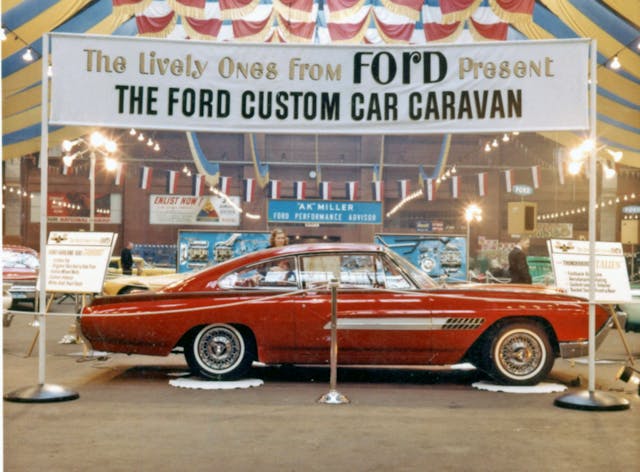
But DST had a different goal with this T-bird: It was meant to be a showy beauty that would participate in Ford’s Custom Car Caravan, an in-person marketing campaign to drum up attention to the Ford brand with heavily modified vehicles often sporting the “Kustom” modifications typical of the era. And while the design was penned by the stylists at Ford, DST did the heavy lifting to make the Thunderbird Italien concept a reality.

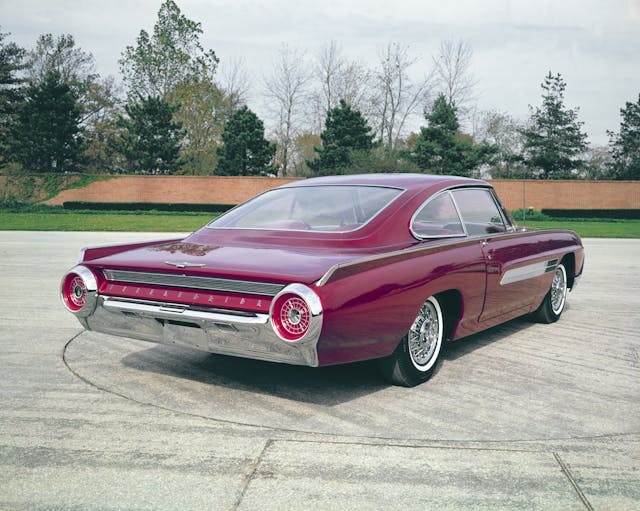
The fastback roofline of the Thunderbird Italien is made of fiberglass, thanks in part to Vince Gardner, a designer who worked with DST on several vehicles for Ford. A set of 1963 Thunderbird fenders and doors were added to the show car, which established a foundation for unique fender vents and bright side molding design for the Italien. A larger chrome strip above the grille was implemented, and the hood incorporated the Thunderbird emblem. Below was an egg-crate grille, a common choice of texture for everyone from Ferrari to Carozzeria Ghia in this time period. Candy apple red paint finished off the look, a period-correct finish for the era. A material commonplace in Italian automobiles was also present in the cabin: Leather, and extensive amounts of it—the headliner, everything around the beltline, and the entire dashboard.
Marketplace
Buy and sell classics with confidence
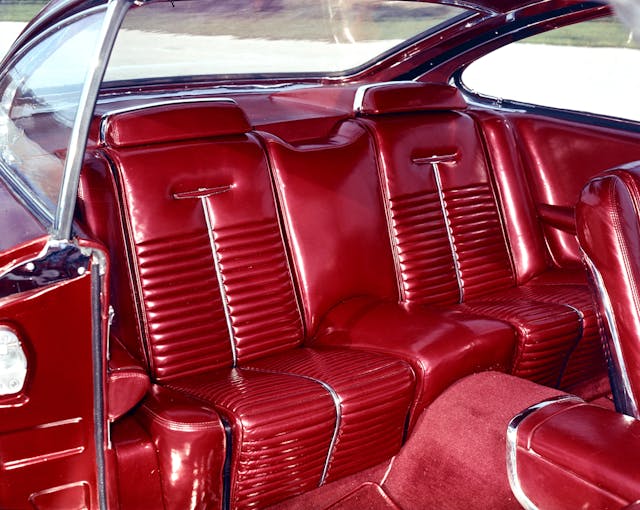
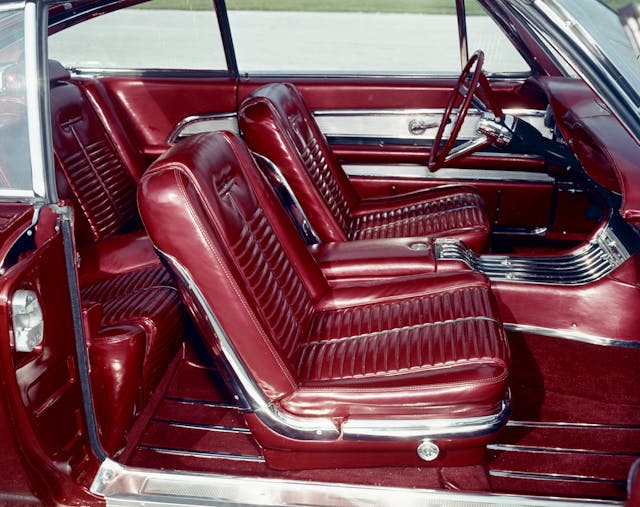
As with most concepts, the Thunderbird Italien was supposed to be crushed after serving its promotional purpose. But since it was based on a production car, DST had the motivation to give it a new lease on life. And that life story is told in the auction’s details, down to the extensive restoration by Tom Maruska in 2005. What’s fascinating here is the fact that DST actually saved this show car in the first place. Turns out they made a habit out of this practice. But don’t take my word for it:
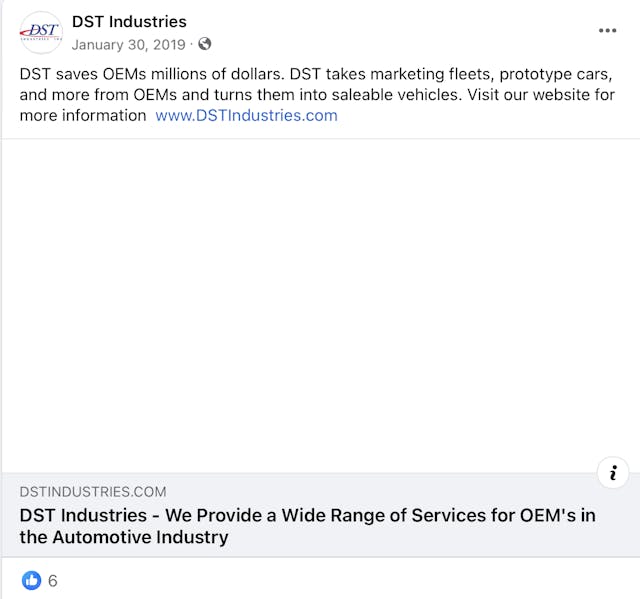
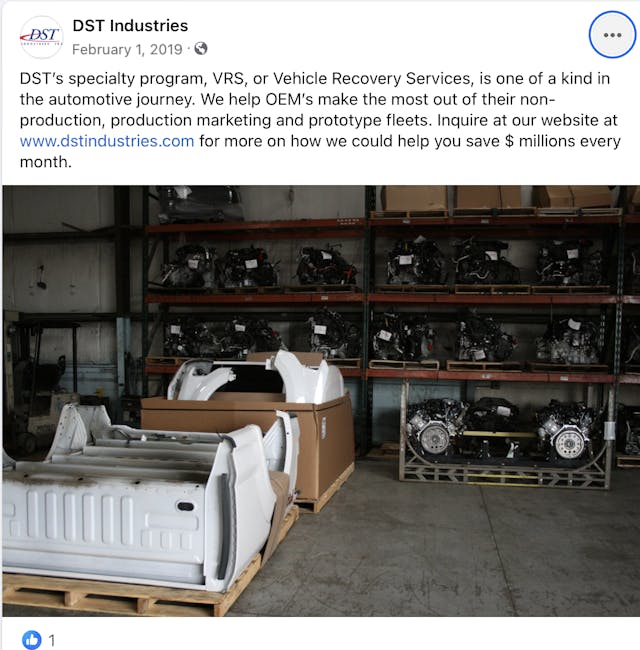
Apparently DST made a significant chunk of its revenues by turning an OEM’s leftover cars into something more valuable than mere metal scrap. Removing “non-compliant parts and using OEM street legal replacement parts” sounds like a labor-intensive job, but DST openly promoted that they can “take what would be a junk car, and turn it into a profit for an OEM.” They partnered with Ford in 1955 and did everything from custom cars to auto show displays to publicity stunts on the Empire State Building, solving seemingly endless logistical challenges for their neighbors in Dearborn.
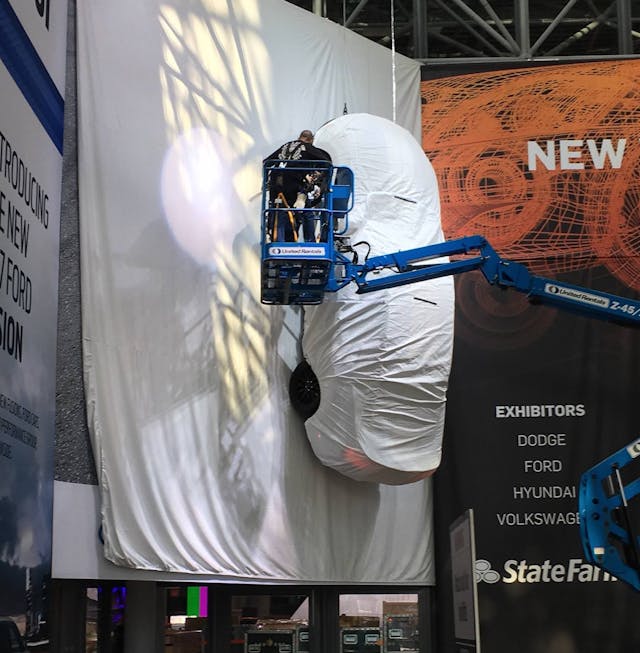
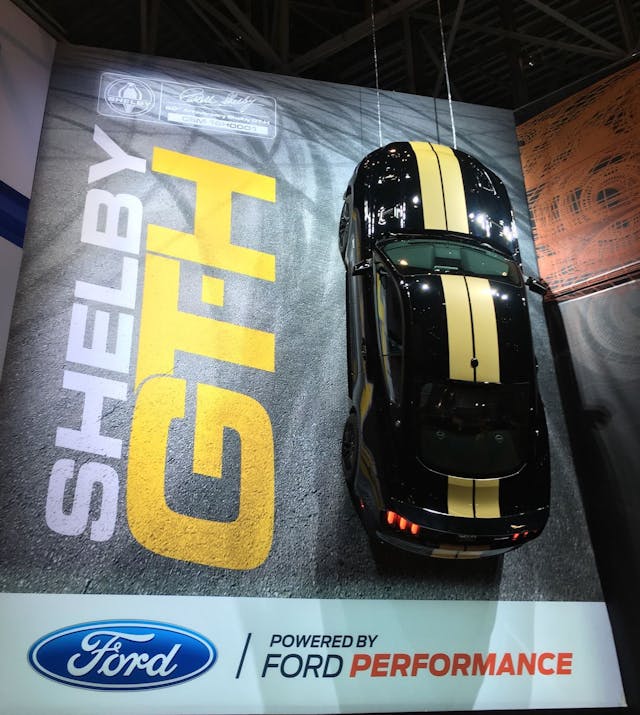
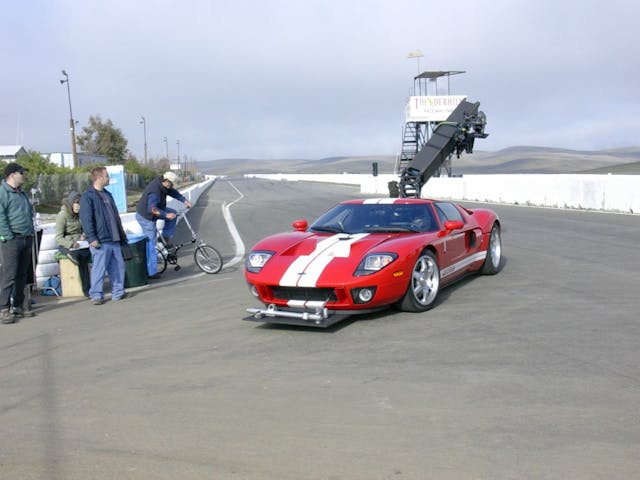
Do yourself a favor and check out the behind-the-scenes photos on Dearborn Steel Tubing’s Facebook page right now. (Time might be of the essence, as the company closed its doors back in 2020, and the account may not be up for long.) The number of projects that DTS has engaged (and documented!) is pretty astounding. According to its former CEO Brenda Lewo, DST once employed “130 certified automotive technicians and mechanics” with three facilities situated on 29 acres.
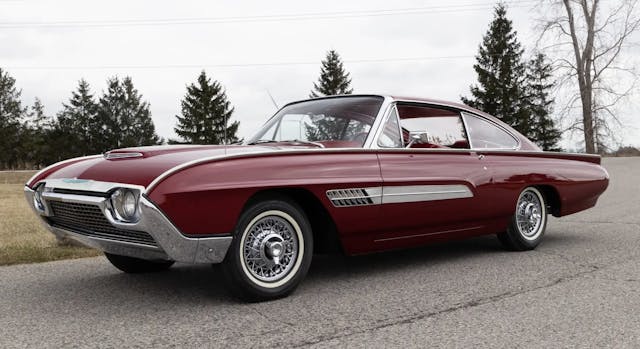
While it’s sad to see a company like Dearborn Steel Tubing go out of business, perhaps the 1963 Thunderbird Italien proves that its legacy of saving/repurposing the “surprise and delight” of a concept is an enduring one. The Thunderbird Italien both survived and thrived, as witnessed by the extensive restoration performed by the fifth of its seven owners after DST saved it. Who knows what other classics DST saved from imminent ruin, after spending so much time and money to bring them to life in the first place.
***
Check out the Hagerty Media homepage so you don’t miss a single story, or better yet, bookmark it. To get our best stories delivered right to your inbox, subscribe to our newsletters.















There are very few cars that I like the upright/formal squared off roof treatment on. Bubble top or 64 Impala style is better for just about all early 60s things to me.
I do like fastback roofs on most things –this is a winner to me. Now I wonder what that roof would look like on some of those wilder looking early 60s Chrysler Co. offerings.
The fast back roofline was a bit jarring to me at first look, but I think it took me about 7 seconds to say, “YEAH, it works!”
I’m a fan of this era T-Bird but I’m no purist. It’s really a special thing that DST decided to save this one-off concept car.
Interesting story, and well told, Sajeev – thanks. I wouldn’t like it as a production car, but I agree that as a one-off, it’s a good design exercise. And yes, kudos to DST for saving it – I’ve always shuddered at the thought of concept cars going to the crusher, and I’m glad that we find that really quite a few of them got squirreled away by someone before they met that awful fate.
It’s a great looking car. Glad it was saved!
You note DST’s closure – as have I – but it seems as if it might possibly be living in some bizarre alternate zombie form of its old self?
I’ve still seen DST-branded semi trucks supporting Ford PR and marketing events in the years since it originally folded, and a quick Google search reveals as if there’s an entity called “DST Special Services” located in the shadow of the DTW airport, and it seems to be performing much of the same work for Ford it had in the past few decades.
I’ll cede my nerdy soapbox now…
Well that’s very interesting! Apparently they didn’t sell every division off when they closed their doors.